- Decorative lighting
It should also be noted that the selection of the lamp or bulb used in the light fixture is critical to the light illumination received and to the ambience. Bare bulbs give off harsher light than the equivalent wattage bulb that is coated or frosted. Spot light lamps give more directional light than a flood light lamp of the same wattage.
To illuminate countertops that are below cabinets, light fixtures that are specifically designed to be mounted under cabinets are available. These fixtures come in a variety of shapes and sizes. The two most common under cabinet light fixtures are fluorescent tube, see Figure 6 and halogen lighting pucks, see Figure 7.

Figure 6 - Fluorescent under cabinet light fixture

Figure 7 - Halogen under cabinet light fixture
There are other types of under cabinet lamps and styles available.
Track lighting (Figure 8) can also be used as task lighting, especially if the area lighting is creating shadows on countertops. Track lighting has the advantage that it can be easily aimed to direct the light at a specific spot.
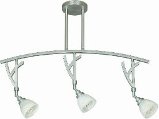
Figure 8 - 3 head track light
Track lighting can also be used to add multi-pendant lights when only one light outlet is available, as shown in Figure 9 or although not truly a track light a single fixture with multiple heads can be used to direct light from a single fixture to multiple locations as shown in Figure 10.
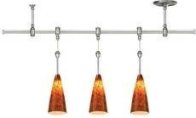
Figure 9 - Pendant lights mounted on track
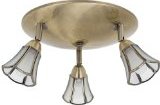
Figure 10 - Three head directional light fixture
Because it does provide illumination, decorative lighting makes up a kitchen's complete illumination package. However, the primary intent of the decorative lighting is to provide aesthetic value to the kitchen.
The most prevalent style of decorative lighting is the chandelier, which is generally placed over the kitchen table as shown in Figure 11 and in some instances over a kitchen island as shown in Figure 12.
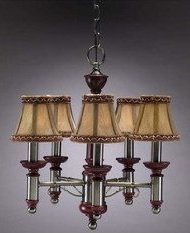
Figure 11 - Kitchen table chandelier
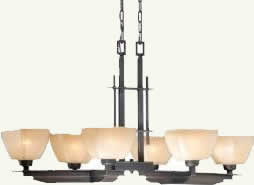
Figure 12 - Kitchen island chandelier
Many people think of a chandelier as an ornate light fixture with crystal ornaments. This however is not the definition that the lighting industry places on a chandelier In the lighting industry a chandelier is a light fixture that is suspended from the ceiling and has a number of branches, each having at least one light bulb.
While a chandelier with crystal ornaments maybe a beautiful work of art, it doesn't fit most kitchen decors and would generally be better suited to formal dining rooms
Track lighting, as described under task lighting can also be used as decorative lighting by highlighting wall items such as paintings, pictures, collections of china or a special feature within the kitchen such as a granite countertop.
Decorative lighting can also include Tiffany light shades and fixtures, Figure 13 and wrought iron fixtures with glass shades, as shown in Figure 14.

Figure 13 - Tiffany light fixture shade
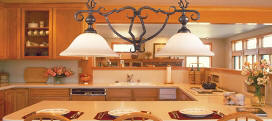
Figure 14 - Wrought iron kitchen light fixture
Lamps & Bulbs
There are many types and styles of lamps and bulbs and each produces light in a different color spectrum. Tests and studies would indicate that the most comfortable lighting for a kitchen are in the warm to neutral color spectrum.
The key to good lighting is to maintain the same level of color spectrum in all the light fixtures within a room. By keeping the same color spectrum in all light fixtures you will create a subconsciously soothing feeling when you are in the room, whereas mixing different spectrum lamps in the same room creates a subconsciously disturbing ambience. It has been proven that the color spectrum of light that an individual lives with on a day to day basis plays a key factor in mood swings and depression.
